Ludwig Bergmann GmbH, better known as Bergmann, is celebrating its 60th year developing and manufacturing forage wagons.
Based in Lower Saxony in Germany, the manufacturer describes itself as a medium-sized, family-run business in the third generation.
The firm now has 125 years of experience producing agricultural machinery under its belt.
First wagon
The firm built its first forage wagons in 1963, namely the T300 and N300.
These featured a unique cutting unit with a combination of fixed and rotating knives. This innovation allowed the loader wagons to be used with tractors from 15hp.
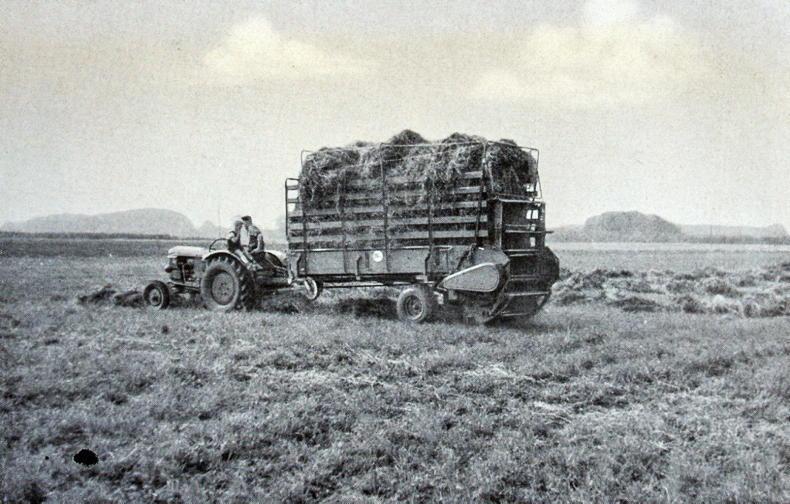
The add-on AL 10 loader made the Bergmann manure spreader more versatile.
To increase the scope of use of the firm’s manure spreaders and multipurpose wagons, an add-on loader was developed that allowed grass, straw, beet foliage and much more to be loaded.
To increase load rate and ground clearance, Bergmann then developed the NT300 wagon with a drawn pick-up in the mid-1960s.

The drawn pick-up was a special feature of the NT 300.
This wagon was optionally available with an articulated drawbar, so that the tractor was able to drive offset from the swath rather than centrally.
At the end of the 1960s, the L15, L20 and L24 wagons with a load volume of 8m³ to 24m³ were launched.

The loader wagons L 15, L 20 and L 24 were a further development of the NT 300 and featured a new cutting unit.
The L-series loader wagons had a cutting unit with up to seven knives and a cut length of 190mm.
1970s
At the end of the 1970s, the forage wagons were selling well for Bergmann and it launched the Rotomat SL35.

ROTOMAT SL 35 with rotation loading system.
This Rotomat had a patented loading system with six evenly spaced conveying elements. Bergmann said that, at the time, this system excelled with its low power demand and smooth operation without large power peaks.
This same type of pick-up system is used for the rotors of modern loader wagons to this day.
Its next generation of loader wagons was born with the KLE/KLT and SLE/SLT in the mid-80s. These models featured a new loading comb bar system with a 2/3 split of the loading combs.

The SLT 2104 was DLG-tested and approved in 1989.
It introduced the Royal in 1996, which saw the advent of the two-rotor system (cutting and press rotor) for wagons and silage trailers.

The Royal with the two-rotor system was designed to offer gentle loading without crushing the crop.
This unit’s unique feature was that cutting and pressing take place in separate steps. It offered a theoretical cut length of 34mm.
Late 1990s
In 1998, the firm comprehensively updated its KLE/KLT and SLE/SLT series wagons. They also received their new, dark green Bergmann colour scheme and were rebranded Swing in that year.
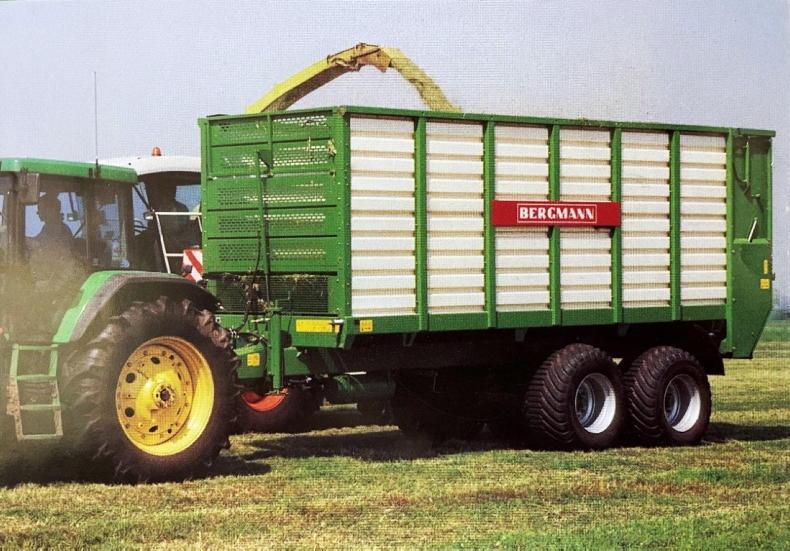
In 1999, the forage transport trailers completed the product range for herbage harvest transport.
In 1999, the HTW series forage transport trailers for use next to forage harvesters or wood choppers joined the product range.

The Shuttle was launched in 2003.
In 2003, Bergmann presented the Shuttle, the high-capacity wagon, which boasted performance. With a pick-up width of 2.20 m and a cutting unit with 53 knives, the company say that this brought its offering considerably forward.
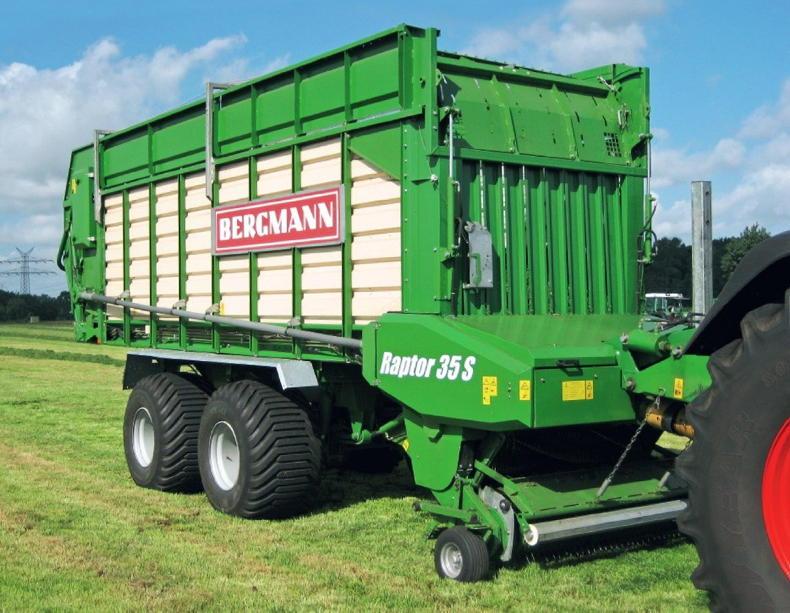
The Raptor was designed for large enterprises and farm contractors.
The Raptor range was launched in 2006, designed to fill the gap between the Royal and the Shuttle ranges.
For combined use as wagon and transport trailer, Bergmann presented its new Carex range in 2011. 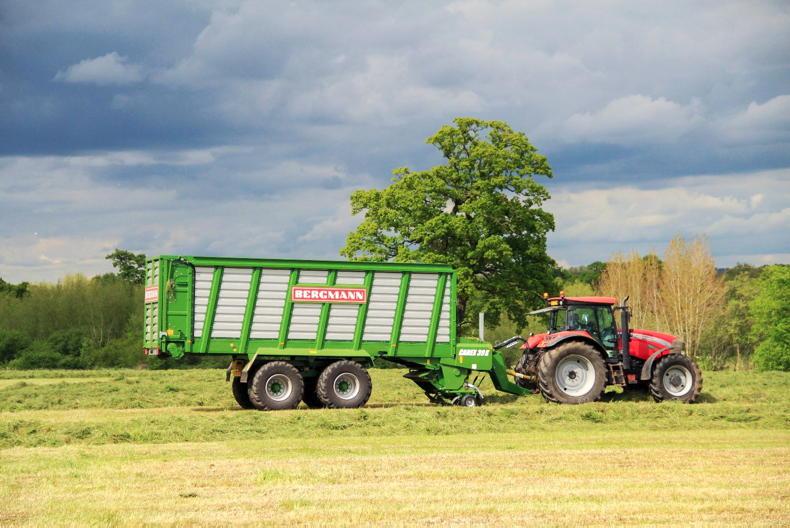
The Carex was optimised for the greater power of modern tractors.
This series introduced a new drive concept that applied torque only where needed.
The firm said that the Carex is also the first Bergmann wagon to feature a scraper floor that is lowered at the front for improved crop flow and reduced power demand.
Agritechnica 2013
At Agritechnica in 2013, it introduced the Repex series of wagons, which had a load volume of up to 35m³.
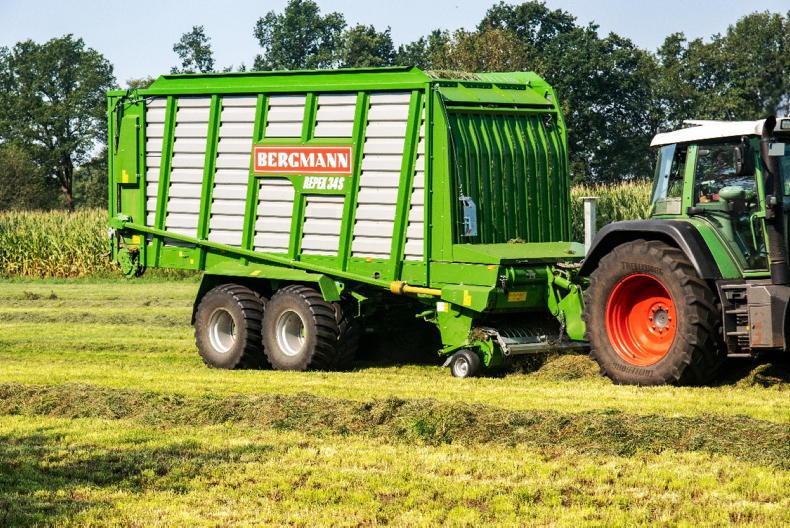
The Repex was the first in its class with a steel scraper floor.
With 41 knives and a theoretical cut length of 35mm, the manufacturer claims that the Repex set new standards in its class.
In 2017, it presented the redesigned Carex and Shuttle series. These wagons featured pick-up widths of 2,050mm and 2,270mm respectively and came with a hydraulically operated hinged front wall as standard, which boosted their load volume by around 5m³.

With the new Carex and Shuttle series, the new, hinged front wall was introduced.
Agritechnica 2023
In 2023, the manufacturer has once again redesigned its range. Some highlights we saw on its stand at Agritechnica included new steered and non-steered pick-up reels, with tines made of high-grade polyurethane.

Updates shown at Agritechnica include the addition of new models, new technology updates and new knife bank options which offer a short cutting length.
The tines are arranged in pairs and secured to the pick-up with one screw. Thanks to the hydraulically driven pick-up, the speed of the pick-up can be controlled independently of the tractor’s PTO speed. This allows the driver to set the pick-up’s ideal operating speed for the current conditions.
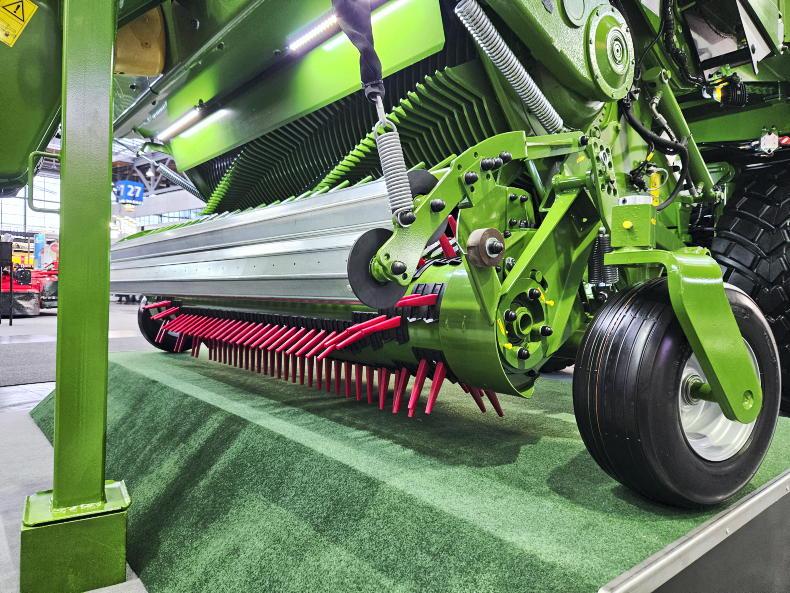
Some highlights we saw on its stand at Agritechnica last week included new steered and non-steered pick-up reels with tines made of high-grade polyurethane.
Other updates include the addition of new models, new technology updates and new knife bank options which offer a short cutting length.
Ludwig Bergmann GmbH, better known as Bergmann, is celebrating its 60th year developing and manufacturing forage wagons.
Based in Lower Saxony in Germany, the manufacturer describes itself as a medium-sized, family-run business in the third generation.
The firm now has 125 years of experience producing agricultural machinery under its belt.
First wagon
The firm built its first forage wagons in 1963, namely the T300 and N300.
These featured a unique cutting unit with a combination of fixed and rotating knives. This innovation allowed the loader wagons to be used with tractors from 15hp.

The add-on AL 10 loader made the Bergmann manure spreader more versatile.
To increase the scope of use of the firm’s manure spreaders and multipurpose wagons, an add-on loader was developed that allowed grass, straw, beet foliage and much more to be loaded.
To increase load rate and ground clearance, Bergmann then developed the NT300 wagon with a drawn pick-up in the mid-1960s.

The drawn pick-up was a special feature of the NT 300.
This wagon was optionally available with an articulated drawbar, so that the tractor was able to drive offset from the swath rather than centrally.
At the end of the 1960s, the L15, L20 and L24 wagons with a load volume of 8m³ to 24m³ were launched.

The loader wagons L 15, L 20 and L 24 were a further development of the NT 300 and featured a new cutting unit.
The L-series loader wagons had a cutting unit with up to seven knives and a cut length of 190mm.
1970s
At the end of the 1970s, the forage wagons were selling well for Bergmann and it launched the Rotomat SL35.

ROTOMAT SL 35 with rotation loading system.
This Rotomat had a patented loading system with six evenly spaced conveying elements. Bergmann said that, at the time, this system excelled with its low power demand and smooth operation without large power peaks.
This same type of pick-up system is used for the rotors of modern loader wagons to this day.
Its next generation of loader wagons was born with the KLE/KLT and SLE/SLT in the mid-80s. These models featured a new loading comb bar system with a 2/3 split of the loading combs.

The SLT 2104 was DLG-tested and approved in 1989.
It introduced the Royal in 1996, which saw the advent of the two-rotor system (cutting and press rotor) for wagons and silage trailers.

The Royal with the two-rotor system was designed to offer gentle loading without crushing the crop.
This unit’s unique feature was that cutting and pressing take place in separate steps. It offered a theoretical cut length of 34mm.
Late 1990s
In 1998, the firm comprehensively updated its KLE/KLT and SLE/SLT series wagons. They also received their new, dark green Bergmann colour scheme and were rebranded Swing in that year.

In 1999, the forage transport trailers completed the product range for herbage harvest transport.
In 1999, the HTW series forage transport trailers for use next to forage harvesters or wood choppers joined the product range.

The Shuttle was launched in 2003.
In 2003, Bergmann presented the Shuttle, the high-capacity wagon, which boasted performance. With a pick-up width of 2.20 m and a cutting unit with 53 knives, the company say that this brought its offering considerably forward.

The Raptor was designed for large enterprises and farm contractors.
The Raptor range was launched in 2006, designed to fill the gap between the Royal and the Shuttle ranges.
For combined use as wagon and transport trailer, Bergmann presented its new Carex range in 2011. 
The Carex was optimised for the greater power of modern tractors.
This series introduced a new drive concept that applied torque only where needed.
The firm said that the Carex is also the first Bergmann wagon to feature a scraper floor that is lowered at the front for improved crop flow and reduced power demand.
Agritechnica 2013
At Agritechnica in 2013, it introduced the Repex series of wagons, which had a load volume of up to 35m³.

The Repex was the first in its class with a steel scraper floor.
With 41 knives and a theoretical cut length of 35mm, the manufacturer claims that the Repex set new standards in its class.
In 2017, it presented the redesigned Carex and Shuttle series. These wagons featured pick-up widths of 2,050mm and 2,270mm respectively and came with a hydraulically operated hinged front wall as standard, which boosted their load volume by around 5m³.

With the new Carex and Shuttle series, the new, hinged front wall was introduced.
Agritechnica 2023
In 2023, the manufacturer has once again redesigned its range. Some highlights we saw on its stand at Agritechnica included new steered and non-steered pick-up reels, with tines made of high-grade polyurethane.

Updates shown at Agritechnica include the addition of new models, new technology updates and new knife bank options which offer a short cutting length.
The tines are arranged in pairs and secured to the pick-up with one screw. Thanks to the hydraulically driven pick-up, the speed of the pick-up can be controlled independently of the tractor’s PTO speed. This allows the driver to set the pick-up’s ideal operating speed for the current conditions.

Some highlights we saw on its stand at Agritechnica last week included new steered and non-steered pick-up reels with tines made of high-grade polyurethane.
Other updates include the addition of new models, new technology updates and new knife bank options which offer a short cutting length.




















 This is a subscriber-only article
This is a subscriber-only article





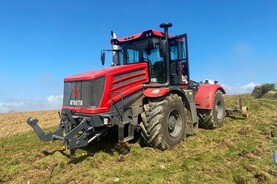

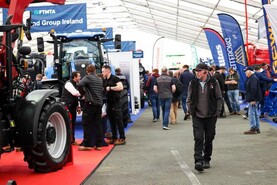


SHARING OPTIONS: